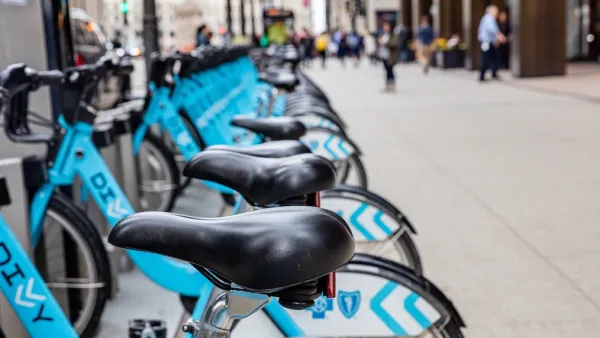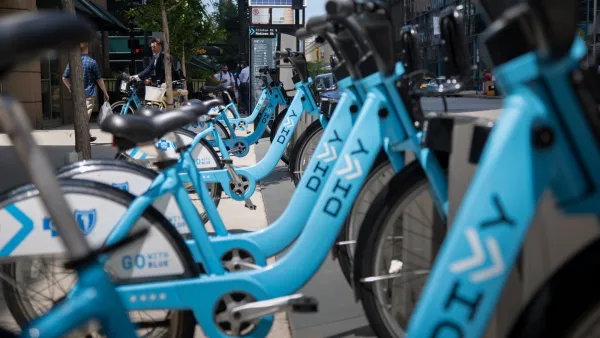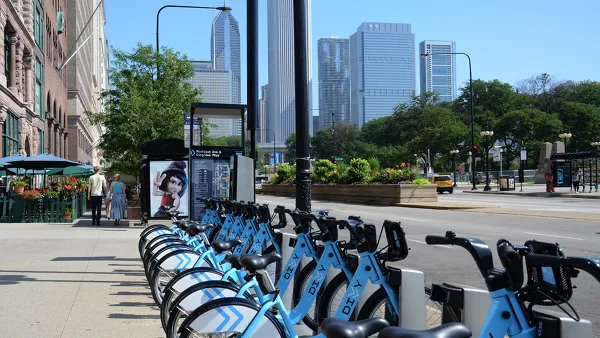In cities across America, municipal bike-share systems have had a hard time reaching low-income and minority populations. As Chicago plans its new system for next year's launch, the city is developing measures to broaden the demographics of cycling.
John Greenfield looks at how Chicago Department of Transportation (CDOT) deputy commissioner Scott Kubly, who helped launch Capital Bikeshare in Washington, D.C., and is managing Chicago’s new system, plans to overcome some of the challenges that have prevented bike-share systems in cities like Denver and Washington from reaching those most in need of cheap, efficient transportation.
"While bike sharing has great potential, the credit-card requirement [for membership] and other factors have been obstacles to attracting a diverse membership in other cities," notes Greenfield. "In Denver, where roughly fifty percent of residents are people of color, almost ninety percent of bike-share users are non-Hispanic whites, according to a member survey. 'Our demographic profile is nothing to be proud of, and we know that,' acknowledged Parry Burnap, head of Denver’s program, at a recent urban planning conference. 'We are mostly male, mostly white, mostly wealthy, mostly well educated.'”
So how does Kubly plan to improve access for a more diverse clientele? Strategies include providing training for inner-city youth to develop a workforce that "reflects the diversity of the city and help create a sense of ownership," working with community groups and churches to provide bike share access for people who don’t have credit cards, and distributing kiosk locations equitably.
“My number-one priority is getting a membership that reflects the diversity of the city,” Kubly assured attendees at a recent public meeting in Chicago's Bronzeville neighborhood. “Since we’re using public dollars, it’s important that the folks who are using the service reflect everybody in the community. It’s a challenge but we’re going to crack it.”
FULL STORY: Bike share, not white share: can Chicago’s program achieve diversity?

Analysis: Cybertruck Fatality Rate Far Exceeds That of Ford Pinto
The Tesla Cybertruck was recalled seven times last year.

National Parks Layoffs Will Cause Communities to Lose Billions
Thousands of essential park workers were laid off this week, just before the busy spring break season.

Retro-silient?: America’s First “Eco-burb,” The Woodlands Turns 50
A master-planned community north of Houston offers lessons on green infrastructure and resilient design, but falls short of its founder’s lofty affordability and walkability goals.

Test News Post 1
This is a summary

Analysis: Cybertruck Fatality Rate Far Exceeds That of Ford Pinto
The Tesla Cybertruck was recalled seven times last year.

Test News Headline 46
Test for the image on the front page.
Urban Design for Planners 1: Software Tools
This six-course series explores essential urban design concepts using open source software and equips planners with the tools they need to participate fully in the urban design process.
Planning for Universal Design
Learn the tools for implementing Universal Design in planning regulations.
EMC Planning Group, Inc.
Planetizen
Planetizen
Mpact (formerly Rail~Volution)
Great Falls Development Authority, Inc.
HUDs Office of Policy Development and Research
NYU Wagner Graduate School of Public Service




























